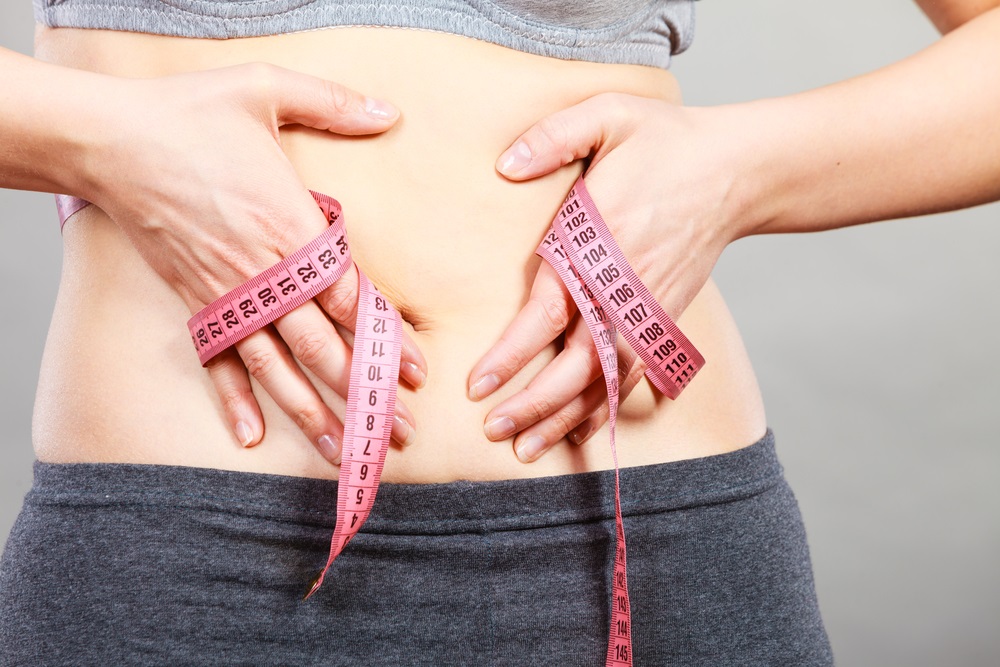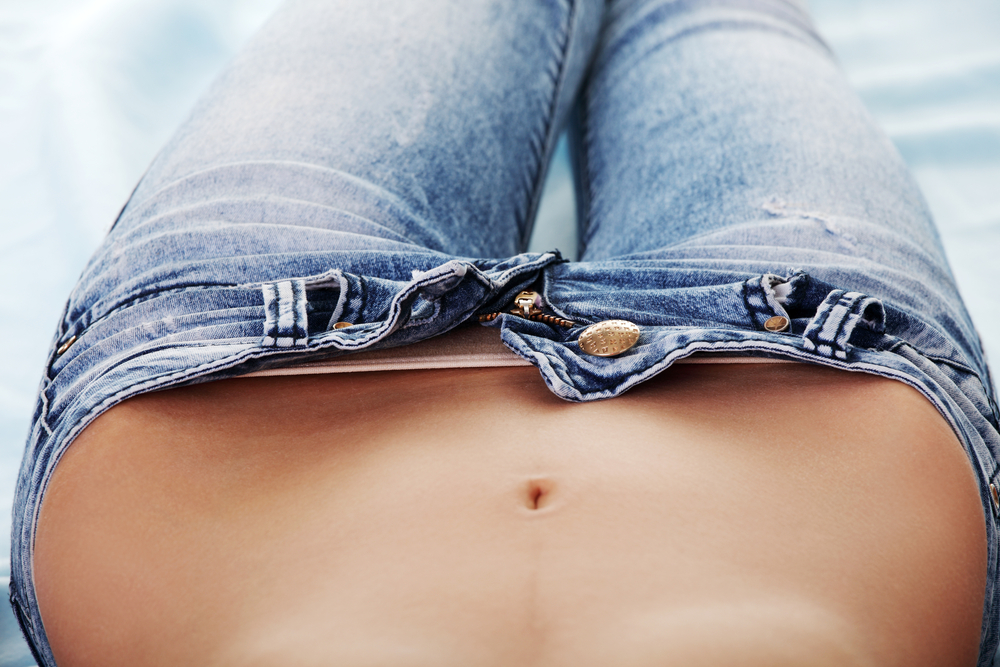- To remove significant amounts of fat, liposuction remains the safest, most effective treatment.
- Abdominoplasty and panniculectomy are surgical procedure that flatten the stomach by removing excess fat and skin.
- CoolSculpting, Vanquish and Velashape are good non-surgical options for smaller fat deposits.
- Laser liposuction and Zerona are controversial as experts remain on the fence about their safety and efficacy.
It may be that you’ve lost a significant amount of weight and you want your smaller clothing and swimwear to fit better. Or perhaps you’re done having children and are ready to reclaim your pre-pregnancy figure.
Whatever the reason, there is a suitable fat reduction treatment to fit your individual needs.
Is Liposuction for You?
Sometimes, no matter how hard you try, localized areas of fat deposits persist, preventing you from achieving more definition or a sleeker body contour.
New York City plastic surgeon Dr. Leonard Grossman notes that “patients who are relatively young, have good skin tone in the abdomen, yet show signs of excess subcutaneous fat make perfect candidates for liposuction.”
In other words, if you’re working out at the gym and eating a healthy diet but still have stubborn pockets of fat, liposuction is right for you. Your skin will also be more likely to tighten up naturally after the procedure if you’re at a healthy weight and have good muscle tone.
Recovery from liposuction is fast and requires very little downtime. Another advantage is that it causes very little scarring, since the incisions are so small. Your surgeon may even hide some of the incisions in less conspicuous places like the navel.
Liposuction Drawbacks
It’s important to consult an experienced plastic surgeon to perform your liposuction. Otherwise, the risk of ending up with less than ideal results (e.g. uneven skin texture) is high.
Liposuction is not a weight loss solution, nor is it a good option for people who want to remove loose, excess skin. It’s also important to remember that weight gain, aging, and pregnancy can impact your results over time.
Liposuction is often used alongside other forms of belly fat removal surgery. For instance, plastic surgeons frequently combine abdominoplasty and liposuction.
When to Choose Abdominoplasty
An abdominoplasty, also known as a tummy tuck, is a procedure designed to remove loose, excess skin and fat from the abdominal area and tighten muscles in the abdominal wall. New York City plastic surgeon Dr. Joshua D. Zuckerman notes that for women who’ve had one or more pregnancies, an abdominoplasty is the perfect option.
A tummy tuck can eliminate fatty tissue, excess skin and stretch marks on the lower abdomen. The major body contouring advantage of this procedure is that it can actually reshape the belly and midsection, helping patients regain their “pre-baby” body.
Additionally, Dr. Zuckerman advises that abdominoplasty is an appropriate corrective option for women who experience ‘diastasis recti’ – an abdominal muscle separation that can occur during pregnancy.
It’s important to note that abdominoplasty is not a suitable option for women who intend to have more children. The muscles that get repaired during a tummy tuck can separate during future pregnancies, so it’s best to wait until your child bearing years are truly over and done.
Abdominoplasty can offer similar benefits to people who have lost a significant amount of weight by removing excess skin and reshaping the belly button.
Specific techniques are employed to target different areas: a full tummy tuck is best suited for the areas above and below the belly button. If you have small amounts of fat and skin below the belly button that need removal, or if you feel your abdomen protrudes a little too much for your liking, a mini tummy tuck may be preferable.
Abdominoplasty Drawbacks
Abdominoplasty is not a weight loss solution. The procedure is best suited to those who have achieved a stable weight, yet maintain a moderate amount of excess skin and subcutaneous fat on the abdominal wall.
While a mini tummy-tuck causes little scarring, a full tummy tuck leaves a longer scar that extends from hip to hip. For this reason, Dr. Zuckerman stresses that it’s critically important to select the right surgeon: those experienced in the procedure will place the incision very low – below the bikini line, ideally.
Another negative is recovery time. You may only feel ready to go back to work and other daily tasks 10-14 days after the procedure. Generally, patients are also required to maintain surgical drains for several days. These drains are then checked and removed by the surgeon during follow-up appointments.
On top of that, patients will be restricted from most physical activity for approximately six weeks to allow the incisions and damaged tissues to heal properly.
Panniculectomy Pros and Cons
A panniculectomy may be right for you if you’ve lost a significant amount of weight, either naturally or following bariatric surgery.
As a result of weight loss, you may have been left with an unsightly flap of excess skin hanging from the abdominal region and draping down over your genitals or thighs. This excess skin is referred to as the “pannus” or “abdominal apron.” Accompanying this uncomfortable protrusion of skin, you may experience frequent irritation and infections (known as intertrigo).
“A panniculectomy is a reconstructive procedure suited for patients who suffer from multiple episodes of fungal infections in their skin as a result of a significant excess of skin folds that are difficult to maintain,” explains San Francisco plastic surgeon Dr. Ziv M. Peled.
“During this operation, an incision similar to an abdominoplasty is made, but the abdominal wall tissues are not elevated to the xiphoid process (bilateral breast bone) to redrape them, and no abdominal wall tightening is performed. This procedure simply involves excision of a ‘pannus’ of fat and skin and direct closure,” he clarifies.
Panniculectomy Drawbacks
Expect a hospital stay from one to three days. Once patients leave the hospital, they may need to contend with surgical drains and return later to have them removed by a physician.
In most cases, patients will be required to wear compression garments and exercise will be off limits for approximately six weeks to allow for adequate healing.
Additional Fat Removal Options
Laser Liposuction
Laser liposuction entails passing a very thin fiber optic cable under the skin, which carries a laser beam that heats tissues to 900 degrees, thereby melting the fat.
With this procedure, however, it’s best to proceed with caution. A study published in The Journal of Clinical and Aesthetic Dermatology suggests that clinicians have been reluctant to accept the treatment as it carries significant risks for adverse reactions.
Plus, there are no proven benefits above and beyond a traditional liposuction procedure, which is considered a very safe and effective option for belly fat removal.
CoolSculpting
One of the most effective nonsurgical options available for belly fat removal is cryolipolysis, the best example of which is CoolSculpting. “During this procedure, a patient simply sits in a room while a machine is applied to the areas of excess fat in an attempt to ‘freeze the fat cells,’ which then die off and are absorbed by the body,” informs Dr. Peled.
The advantage of this procedure is that it entails very little downtime. The disadvantage is that multiple treatment sessions are often required, making it quite pricey and inconvenient for patients. The results are also more subtle than any of the surgical procedures available for belly fat removal.
RELATED: Coolsculpting vs. Liposuction — Advantages, Disadvantages, and Cost
Vanquish
Vanquish is a radio frequency device designed to eradicate fat cells without even coming into contact with the body. On average, patients report losing one to two inches from their waist with a fat loss equivalent to two to three pounds.
This nonsurgical fat reduction method is suited to people who have reached a healthy weight but still have stubborn fat deposits that don’t seem to budge – regardless of how much exercise they do or how strictly they stick to their diets. The downside, however, is that the treatment results are only temporary.
Zerona
Zerona uses a cold, low-level laser technology to directly target the cellular contents of fat cells. It claims to liquefy and shrink fat cells while also tightening the skin.
Clinical trials indicate Zerona may reduce waist circumference by an average of 1.8 inches and the upper abdomen by 1.3 inches. However, some researchers who have tested the technology warn that it doesn’t deliver on its promises. They suggest the technology doesn’t have the capacity to reach the fatty layers successfully and produces very little — if any — results.
VelaShape
VelaShape is a nonsurgical treatment that uses radio frequency combined with infrared light energy and mechanical suction massage to melt away the fat. The average reduction of fat in the belly region is half an inch. Velashape can also target other problem areas such as the love handles, thighs and buttocks.
The advantage of the treatment is that relatively no downtime is required. The disadvantage is that the treatment is only temporary and must be repeated every one to two months. The procedure is also best suited to people who are closer to their ideal body weight and are looking to reduce small fat deposits.









